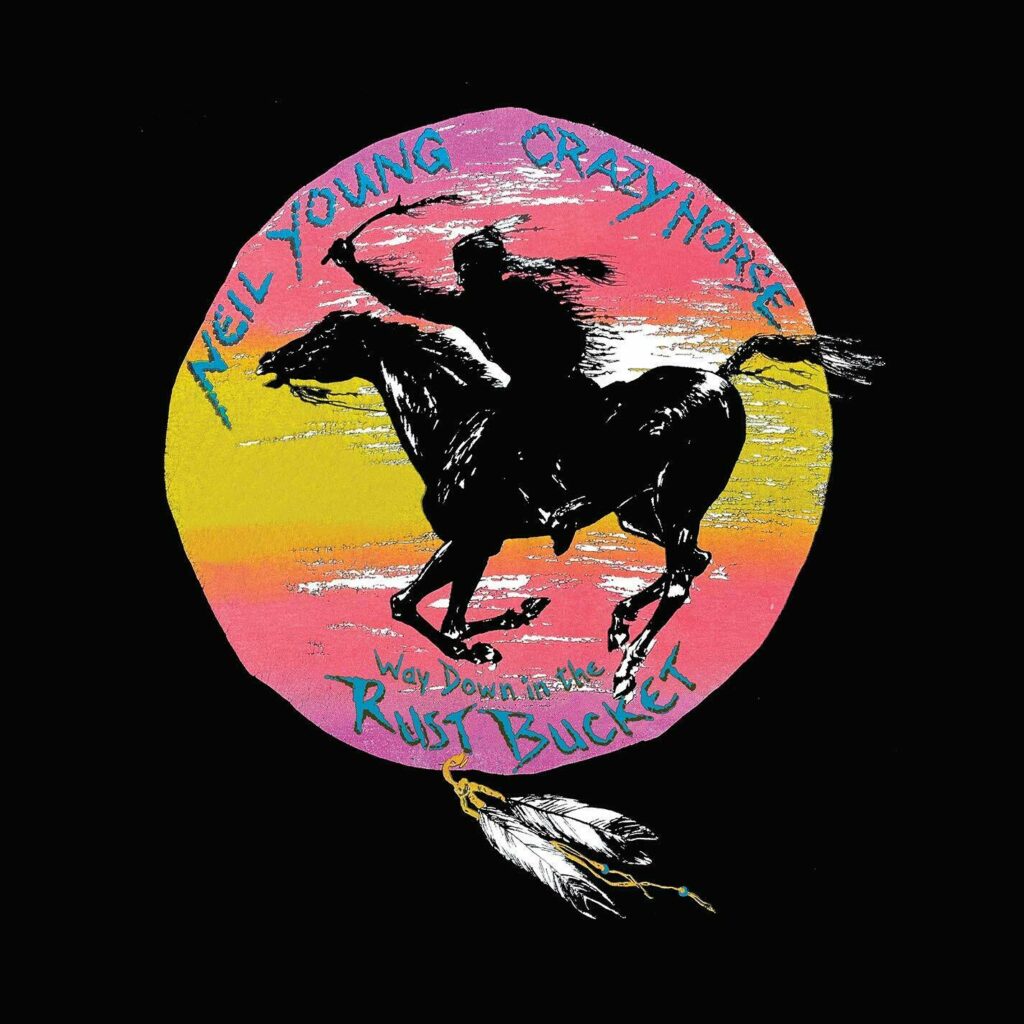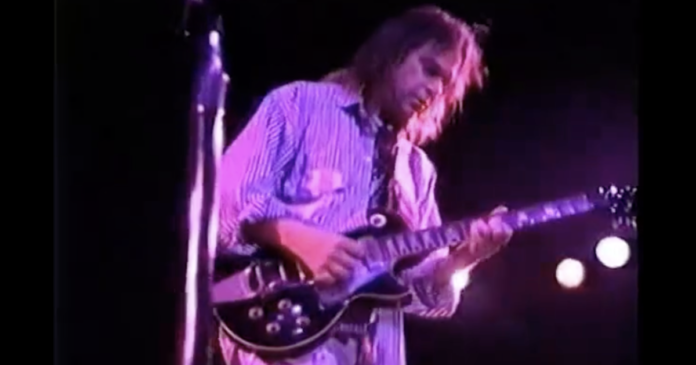It took Neil Young 31 years to release Way Down in the Rust Bucket, a recording of the live, three-plus hour show with his trusty band Crazy Horse backing him up, performed hometown venue The Catalyst in Santa Cruz—merely a short drive from his Broken Arrow Ranch in Redwood City. This long-shelved live performance, “a run-through for the band” before touring the Ragged Glory album in January of 1991, was captured on November 13, 1990. Exactly one day after Young turned 45.
A six-camera team along with a professional audio crew recorded the show in front of 800 adoring fans. Released last month on CD and DVD as a deluxe box set edition, the performance features Young playing oddities from his marathon career—and signaling a new beginning, which nobody saw coming.
Rust Bucket allows Young, guitarist Frank “Pancho” Sampedro, bassist Billy Talbot, and drummer Ralph Molina to get their footing in a friendly home base venue just before a new decade recasts Neil Young as a “folk hero meets Lion in Winter” figure within the new rock alignment. (No. Not Motley Crue, Poison, or Def Leppard. He survived that rock Kabuki show. Barely.)
The 1980s saw Young suffer a bit. Changing record labels, attempting reinvention a couple of times, fighting with MTV, all of which left him with dithering results. Most notable was a late New Wave record inspired by jamming with Devo called Trans, which in recent times has come back around to be considered a hidden gem. But if you don’t like synths and sull-on Vocoder stylings coming from Neil, don’t bother.
It was the song “Rocking In The Free World” from 1989’s Freedom that gave us that wink. He still had anthems left in the tank.
In recent years Neil Young Archives has been working full-tilt releasing lost albums and live performances. All eras of Young fans now have the opportunity to track a marathon career without the squat and whisper of music critics. Young, who turns 75 this year, has endured the many peaks and valleys, bedlam or bust, genius or washed phases of a storied career.
Somehow he rides it out. Then reintroduces himself to the next generations of fans.
In the same way George Clinton and all things Parliament-Funkadelic associated would heavily influence a ’90s generation of G-Funk hip-hop artists, Neil Young would become the go-to elder statesman for that new indie, alternative, emo, noise sensation MTV coined as grunge.
On that November 13, 1990 eve, a little band out of Seattle called Nirvana was just settling in with their new drummer Dave Grohl, while another indie band from the same city, previously called Mookie Blaylock at the start of 1990, but soon changed to Pearl Jam, was a month away from introducing their new lead singer “Ed.”
When Neil Young and Crazy Horse took the stage that night—Young didn’t like rehearsing in small bars anymore—it was a perfect spot for the group to try stuff out. There was no pressure in front of this family-oriented, friendly, hometown crowd.
A return to Crazy Horse was just the kick in the pants Young needed. Multifaceted 13-minute piece “Love To Burn,” full of long solos, grumpy country, bluesy folk, and sonically cantankerous nature, was the version of Neil Young that blew up his live albums in the late ’70s. “Cinnamon Girl” comes off solidly, full of muscle-memory artistry. “Rust Bucket,” with its easy vibe, serious jams, and energetic crowd—you can hear the approving ovations at the end of “Cortez the Killer” and dozens of other songs—was the way for him to well, get back on the horse.

Weld, the live 1991 album that follows, catches Crazy Horse performing some of the Ragged Glory record—about five songs from it—operating at volume 11 across a world-beater of a tour, announcing that Neil Young is back, AGAIN. “Rocking In The Free World” is the new Neil anthem that old CSNY heads must catch up to. “Carry On” is still dope, but 20 years washed.
New fans, doing that homework and connecting that lineage before going to see Nirvana, Sonic Youth, and Pearl Jam, want to hear the reverb squelch of Uncle Neil. Rust Bucket is the extra credit we did not know was coming, but oh-so-grateful for the context.




